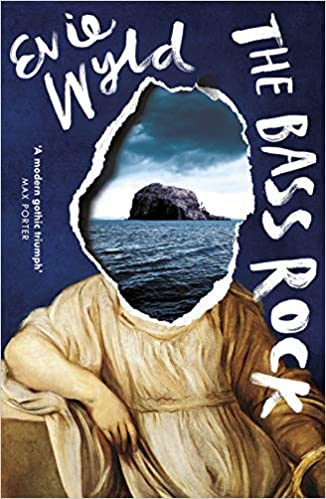The Bass Rock by Evie Wyld
Bass Rock is a massive piece of volcanic rock that sits along the eastern coast of Scotland. Home to the largest population of gannets in the world, a lighthouse built by Robert Louis Stevenson’s grandfather, and an abandoned castle, it presents a dramatic backdrop to Evie Wyld’s powerful third novel, The Bass Rock (Pantheon).
The award-winning writer structures this work into three compelling storylines that take place within view of the rock or symbolically end up there. Storyline I represents the central drama, showing the raw pain of Viviane Hamilton, a 40-year-old woman in the present day who must ready her family’s abandoned Scottish mansion for a sale as she recovers from a nervous breakdown and the recent loss of her father. Storyline II, set in the post-war 1940s, addresses the awkward adjustments of Ruth Hamilton, a new bride who takes up residence in the same remote mansion with her still-grieving widower husband and his two neglected sons. In a more distant yet no less intimate manner, storyline III focuses on Sarah, a young woman accused of being a witch in eighteenth-century Scotland, and her gritty fight to survive. Her last name isn’t given but we remember her.
From gaslighting husbands to demeaning lovers to gangs of unbridled men from four centuries ago, Wyld digs into how it feels to be the women who experience such men. Both Ruth and Viviane exhibit a keen self-awareness that provides rich food for thought and wonderful moments of humor. Both have inhabited mental institutions in the recent past. Both strive to maintain a firm grasp on the women that they are amid strong pressures to conform to what they feel others might want.
Wandering through rooms full of pictures of the dead wife she has just replaced, Ruth wants to tell the over-doting maid Betty to “just tell me how she [the first wife] would do it and I’ll do it the same.” Battling depression, Viviane makes coffee because “it seems like the kind of thing a person in charge of their own life does,” wonders “what it must be to move through life without caring what it thinks of you,” and marvels how “for an evening I am the woman I thought I was going to be” as she ventures out on a date with a new man.
Sarah’s story is half as long as Ruth’s or Viviane’s, its narrator is a young man caught up in his own struggles and the 1700s era seems irrelevant to our own, but this very young woman blazes across the page nonetheless. Wyld erases four hundred years and a detached point of view with the first sentence: “There’s a girl in the pig house. They mean to burn her.” This is our introduction to Sarah, whom we discover coated in mud with her clothes in rags about her armpits. Two men stand on her wrists and another pulls up his britches as he climbs off of her. We are riveted in horror and compelled to read on.
Perhaps the strongest women in the book are the ones who deal only indirectly with the men we come to know. Betty the cook has “the body of a cabin boy; every piece of flesh on her earned its place.” She fiercely shepherds and defends her own working-class family against the judgment of the English gentry for whom she works. She shows the same unwavering devotion to Ruth as Ruth timidly enters her new life as wife and stepmother.
Maggie, an itinerant sex worker whom Viviane befriends, becomes the most articulate voice against the misogyny these women face, as she dryly observes how “sex has brought me a lot worse things than money.” The actions of both Betty and Maggie — in response to the men who cheat and steal and lie and make their women suffer — provide some of the most dramatic elements to the novel.
So many satisfying and imaginative aspects of this elegant story juxtapose the grimness of sexual violence and misogyny. The story is visited by ghosts, often appearing as foxes and wolves, and while not all of the characters can see them, no one questions their presence. Kindness is shown between sisters in pain; family secrets are shared and forgiven; and complicated, nuanced men who may hold the bulk of the power endure their own suffering as well.
Wyld makes sure there is a witness to all of the horror, and it is Bass Rock. The most graphic scene of the novel starts and ends the book in plain view of the rock. The rock also provides the setting for some of the most disturbing scenes as men do unspeakable things to women and “then … tick on with their lives as though it’s all part and parcel.”
Some days the rock leans in on them, casting its shadow. On other days it sits far away, as “a rust of seaweed surrounds it like a frill.” Viviane tries to “search for some scar of what has been there but the rock is indifferent.” It bears silent witness to the pain of those living in its shadow, begging the question of why anyone other than a rock could remain silent in the face of such injustice and worse.
Yet it is Wyld’s vivid and well-drawn characters that we take with us as we read the final chapter. It is their ability to look clearly at themselves and the society they inhabit that gives us hope for a day when women treat themselves more kindly and expect the same from their men.





